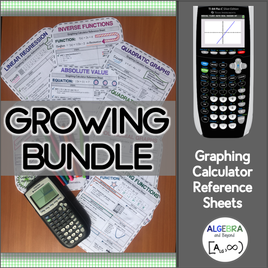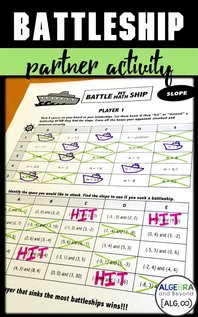 
I am always trying to find fun and easy ways to make math more applicable for my students. The idea of visiting other places is a great way to get their attention. I created a frequent flyer mile template that can be used in any math course that touches on slope, linear equations, or direct variation. The activity can be used with a whole-group, small-group, or even a take home assignment. One of the best features is, it’s set up to give the students lots of choices. They get to choose the airline they use, the dates they fly, and where they are going to travel. Their goal is to find out if they can earn a free flight. Of course, there is lots of math they need to do along the way! Here is how I organize the activity for collaborative, small groups:  
FIRST: Create groups of 2 or 3, and give a list of airlines they can choose from. Be sure to check beforehand that the airline has a points program. Some groups can use the same airline, it really doesn’t matter.
SECOND: Have them research their airline to see how the frequent flyer mile program works. This will help them determine what x- and y- should represent and create their equation. I usually pre-determine the goal points they need to earn for the free flight, as that may be more difficult for them to find, but it’s up to you.
THIRD: Now, they get to decide which places they will travel! They will calculate their points along the way. You will observe students discussing places to travel and strategies on how to make sure they travel far enough to earn a free flight.
LAST: Once they are finished traveling, they need to add the total miles (x) they flew and the total points (y) they earned. They will use these numbers as their right endpoint on their graph. It will also help them determine if they earned a free flight. I use a similar model as above for a whole-group activity, except we vote on which places to visit. We have fun googling each place to see how cool it would be to go there! This would even be a good activity to tie into a history course…hmmmm, something to think about for next time. Sometimes taking a break from the standard lesson is a good thing! Grab this FREE activity sheet here:
Looking for more linear equation resources?
4 Comments
 
The TI-84 calculator can be an amazing and useful tool for students, IF they know how to use it.
Eight years ago, when I first starting teaching high school math, I would verbally tell my students step-by-step what to do on the graphing calculator. Oh, the misery of repeating myself 100 times! Then, I tried writing the steps on the board, so they could write them down for future use. It’s actually quite tricky to write the calculator steps down because of the different keys you can use, students not knowing how to use specific keys, such as the “2nd” key, and not having visuals of what should be on their calculator screen. We managed as best we could for a few years. Then, about five years ago, my school purchased the TI-Smartview software for me. This helped a lot! The students were easily able to follow along one keystroke at a time. It was great, I thought I found a solution to my problem. Unfortunately, more often than not, when my students came back the next day, they forgot the steps they used with me in class. Of course, they did. Ugh, it was back to the drawing board. The other issue I was running into, was after we spent the majority of the class period learning everything algebraically, most students didn’t want to spend any more time with instruction. They didn’t care that their graphing calculator could confirm the answer they found algebraically. Nope, they just wanted to start their homework as soon as possible. ME: But wait, let me show you how to do it on the calculator. It can confirm or deny about 90% of the all the work you do in this class. Don’t you want to be sure everything you do is correct, especially on quizzes or tests? STUDENTS: Ugh, no, we just want to start our homework. This not wanting or knowing how to use the calculator to their advantage kept bothering me. Then, one day, I had had enough. It happened last year, I had a student that could play Tetris on the TI-84 calculator (or some other crazy game I’ve never seen on the calculator before), BUT he didn’t know how to graph a linear equation in Y= editor. My mind was blown. I had the most difficult time with this student trying to get him to understand and navigate the graphing calculator for MATH. In lieu of all of this, I became determined to create graphing calculator reference sheets. No more students forgetting steps. No more writing steps on the board. No more taking up extra class time to learn the keystrokes. No more excuses. Period. The graphing calculator reference sheets have been awesome this year! My students have the steps and visuals right there in front of them. And if we don't have time in class to go through it together, no problem. The steps are so clear, they can do it all on their own. Even my Calculus students love using them, because they forget steps too!
What has been even more exciting is I am learning more of what the TI-84 is capable of as well. For example, you can graph a piecewise function?! I had no idea.
I began creating the sheets with about 10-15 in mind. Then, I realized it’s going to be closer to 20. Now, I’m thinking over 30. But who knows, there really is so much you can do with graphing calculators! Are you in desperate need of a calculator solution like I was? Check out some of the sheets below. If you don't see what you are looking for, check out my store for more! 
Would you like them all? You can get them here. If you have a request for a specific reference sheet, email me here.
|
Hello there,
|













 RSS Feed
RSS Feed







